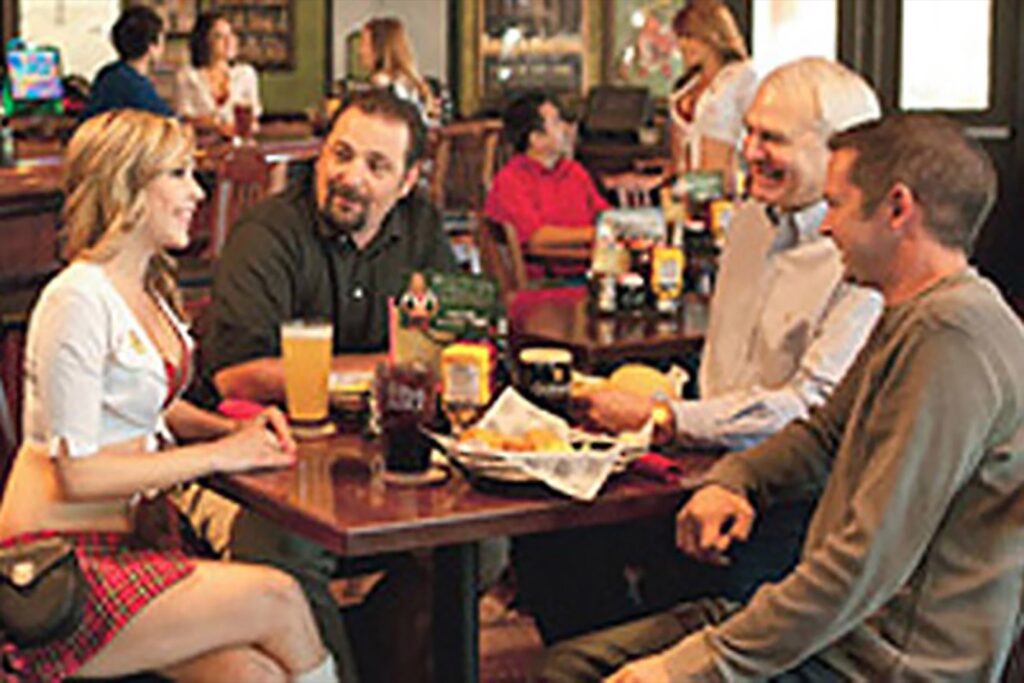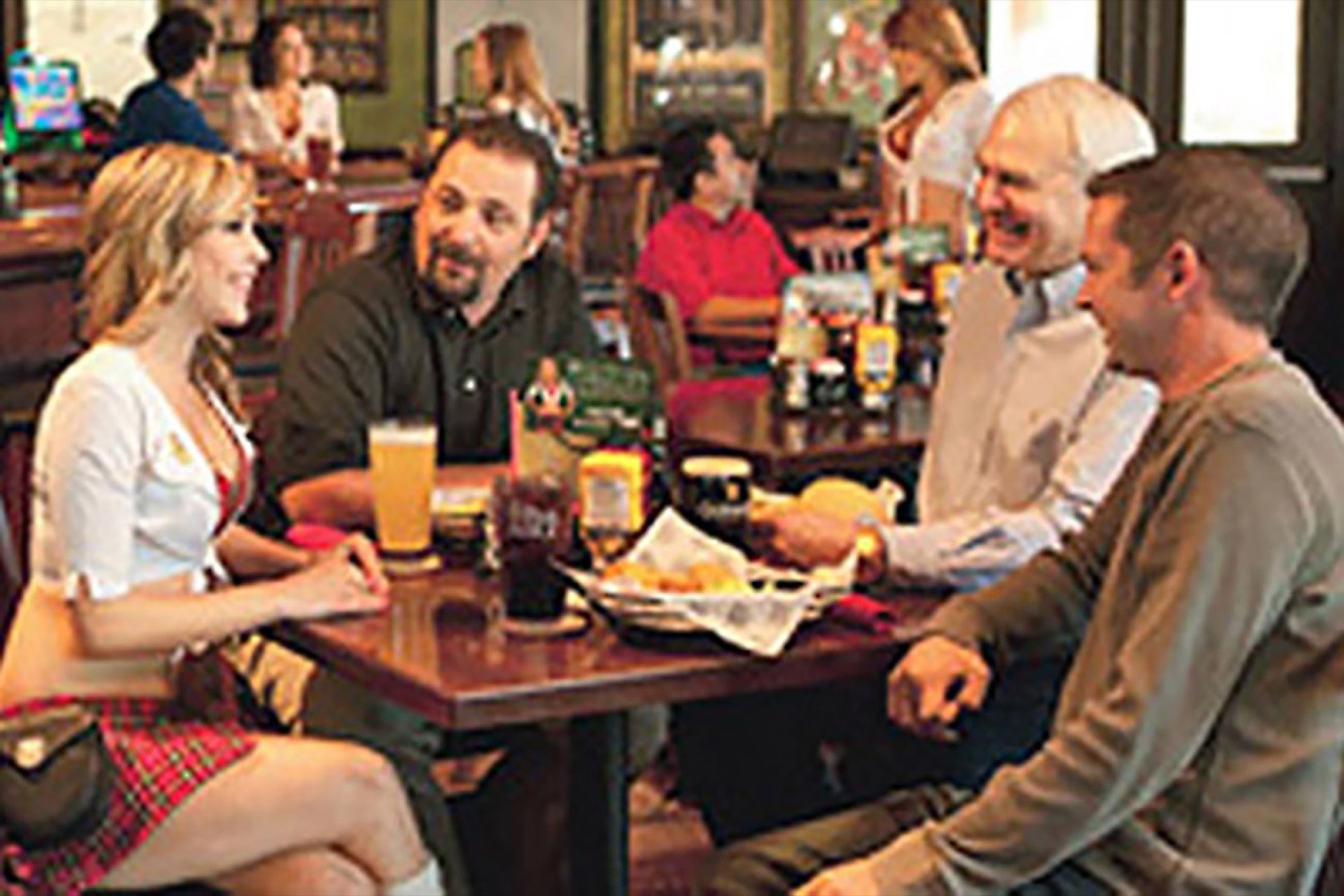
Breasteraunts: Exploring the Controversy and Cultural Impact
“Breasteraunt” is a portmanteau of “breast” and “restaurant,” a term used to describe eating establishments, typically sports bars or casual dining restaurants, that feature scantily clad waitresses. The concept has sparked significant debate, raising questions about objectification, female empowerment, and the overall cultural impact of such businesses. This article delves into the history, controversies, and evolving landscape of breasteraunts, aiming to provide a balanced and informed perspective.
The Rise of Breasteraunts
The modern breasteraunt phenomenon arguably began with the establishment of Hooters in 1983. Hooters quickly gained popularity for its wings, beer, and, notably, its waitresses, known as Hooters Girls, who were hired for their looks and wore revealing uniforms. The success of Hooters paved the way for other similar establishments, such as Twin Peaks, Tilted Kilt, and Ojos Locos. Each of these breasteraunts has its own unique branding and aesthetic, but they all share the common thread of employing attractive women who wear revealing attire.
The appeal of these restaurants often lies in their casual atmosphere, sports-centric environment, and the perceived novelty of being served by attractive waitresses. For many, it’s a place to unwind, watch a game, and enjoy the company of friends. The breasteraunt business model has proven to be financially successful, with some chains expanding rapidly across the United States and even internationally.
The Controversy Surrounding Breasteraunts
However, the breasteraunt concept is not without its critics. A significant point of contention revolves around the objectification of women. Critics argue that these establishments reduce women to mere sexual objects, prioritizing their appearance over their skills and intellect. The uniforms, often consisting of tight-fitting tops and short shorts, are seen as contributing to a culture that normalizes the sexualization of women’s bodies.
Furthermore, concerns have been raised about the working conditions for waitresses in breasteraunts. Some argue that the emphasis on appearance creates a hostile work environment, where women may face pressure to maintain a certain look, deal with unwanted advances from customers, and experience discrimination based on their physical attributes. [See also: Workplace Harassment in the Restaurant Industry]
The debate extends to the broader societal impact of breasteraunts. Critics argue that these establishments contribute to a culture that perpetuates harmful stereotypes about women and reinforces the idea that their value is primarily based on their physical attractiveness. This can have negative consequences for women’s self-esteem, career opportunities, and overall societal perception.
Arguments in Defense of Breasteraunts
Despite the controversy, some argue that breasteraunts offer women opportunities for employment and financial independence. Proponents of this view suggest that women working in these establishments are making a conscious choice to use their appearance to their advantage and that they should not be judged for doing so. They argue that as long as the working conditions are safe and respectful, women should have the right to choose how they earn a living.
Moreover, some argue that the criticism of breasteraunts is a form of moral policing, where individuals are imposing their own values and beliefs on others. They contend that people should be free to choose where they dine and that businesses should be allowed to operate as long as they are not violating any laws or regulations. The breasteraunt concept, they argue, is simply catering to a specific market demand.
It’s also been argued that many professions rely on physical attractiveness to some extent, citing actors, models, and even some customer service roles. The key difference, proponents may argue, is the transparency and explicitness of the breasteraunt model. The focus on appearance is overt and acknowledged, rather than subtly implied.
The Evolving Landscape of Breasteraunts
The breasteraunt industry is not static; it is constantly evolving in response to changing social norms and consumer preferences. Some establishments have made efforts to address the concerns raised by critics by implementing stricter policies against harassment, providing more comprehensive training for employees, and offering more modest uniform options. Other breasteraunts have attempted to rebrand themselves as more family-friendly or inclusive environments.
The rise of social media has also played a significant role in shaping the perception of breasteraunts. Waitresses can use platforms like Instagram and TikTok to showcase their personalities, build a following, and potentially challenge the stereotypes associated with their profession. This allows them to have more control over their image and narrative, potentially empowering them in the process.
However, social media can also amplify the negative aspects of working in a breasteraunt. The constant scrutiny and potential for online harassment can take a toll on employees’ mental health and well-being. It’s essential to consider both the empowering and potentially harmful effects of social media on the breasteraunt industry.
Legal and Ethical Considerations
From a legal perspective, breasteraunts must adhere to all applicable labor laws, including those related to minimum wage, overtime pay, and workplace safety. They must also comply with anti-discrimination laws and ensure that employees are not subjected to harassment or discrimination based on their gender, race, or other protected characteristics. [See also: Employment Law and Restaurant Regulations]
Ethically, breasteraunts must consider the impact of their business practices on their employees, customers, and the broader community. This includes ensuring that employees are treated with respect, that customers are not subjected to offensive or inappropriate behavior, and that the restaurant’s marketing and advertising materials are not perpetuating harmful stereotypes.
The debate over breasteraunts also raises questions about the role of consumer choice. Should individuals be free to support businesses that align with their values, even if those values are controversial? Or should there be limits on what types of businesses are allowed to operate, based on ethical considerations?
Conclusion: Navigating the Complexities of Breasteraunts
Breasteraunts are a complex and controversial phenomenon that reflects broader societal debates about gender, sexuality, and the objectification of women. While some view them as harmless entertainment and a source of employment opportunities, others see them as contributing to a culture that perpetuates harmful stereotypes and normalizes the sexualization of women’s bodies. The breasteraunt industry continues to evolve, adapting to changing social norms and consumer preferences. Whether they are viewed as empowering or exploitative, breasteraunts remain a significant part of the cultural landscape, prompting ongoing discussions about their impact on individuals and society as a whole. The future of breasteraunts will likely depend on their ability to address the concerns raised by critics, create a more inclusive and respectful environment for employees, and adapt to the evolving expectations of consumers. Ultimately, the debate surrounding breasteraunts highlights the ongoing need for critical reflection on the ways in which we perceive and treat women in our society. The phenomenon of the “breasteraunt” requires continuous scrutiny to ensure ethical business practices and the well-being of its employees. This includes addressing potential issues within the breasteraunt such as workplace harassment. Breasteraunt businesses should be transparent and accountable in their operations. The controversies surrounding the breasteraunt concept warrant further investigation and discussion. Therefore, the breasteraunt industry should prioritize ethical considerations and responsible business practices. The impact of breasteraunts on society requires careful evaluation. The debate surrounding breasteraunts is complex and multifaceted. The breasteraunt model reflects broader societal issues related to gender and objectification. Exploring the complexities of breasteraunts is essential for fostering informed discussions about gender equality and ethical business practices.

